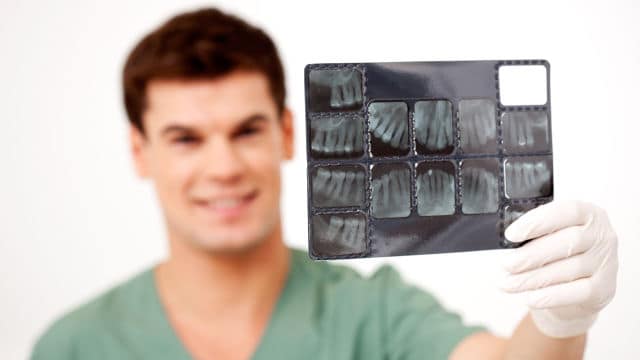When you visit the dentist, you typically receive X-rays wherein a piece of plastic is placed inside your mouth to bite down on, and multiple pictures are taken that shows one or several teeth. Dentists often do several of these X-rays to identify conditions that may be affecting different parts of the mouth.
In contrast to this traditional radiograph, a panoramic dental X-ray creates a single image of the entire mouth: the upper and lower jaws, their temporomandibular (TMJ) joints, all the teeth, the nasal area and sinuses. This image provides a flat representation of the jaw's otherwise curved structure, making it easier to analyze each part.
Why Use a Panoramic X-ray?
A panoramic X-ray gives your dentist a comprehensive view of your entire mouth on a single film and in a relatively short amount of time.
Because a panoramic X-ray shows the entire mouth in one picture, it doesn't produce the detail needed to show cavities. This type of X-ray does, however, show problems such as bone abnormalities and fractures, cysts, impacted teeth, infections and tumors. A dentist who suspects any of these problems may choose to take a panoramic X-ray. He or she may also use this imagery method when planning for treatments such as braces, implants and dentures.
How Is the X-ray Done?
Unlike traditional intraoral X-rays, panoramic dental X-rays are extraoral, meaning the imaging machine and film are outside of your mouth. A panoramic dental X-ray machine projects a beam through your mouth onto film or a detector that rotates opposite the X-ray tube.
The basic design of a panoramic X-ray machine consists of an imaging tube mounted on one horizontal arm that can point toward one side of your face, whereas an opposite horizontal arm that points toward the other side contains the X-ray film or detector. Typically, your head is positioned using chin, forehead and side rests while a bite-blocker keeps your mouth open. The X-ray machine's arms then rotate in a semicircle around your head, starting at one side of your jaw and ending at the other side.









